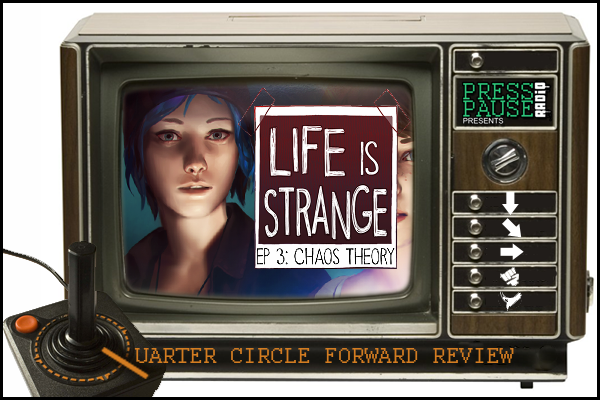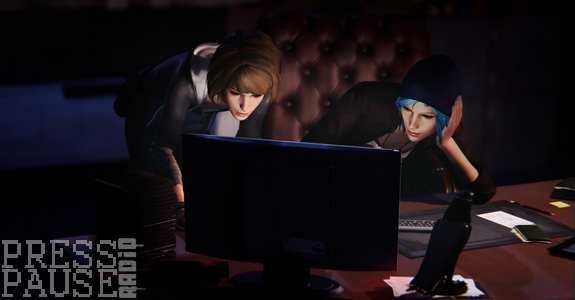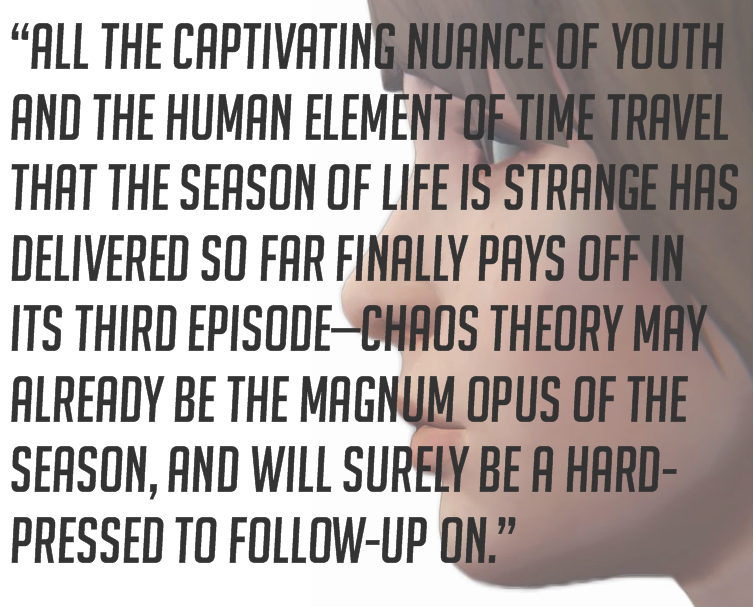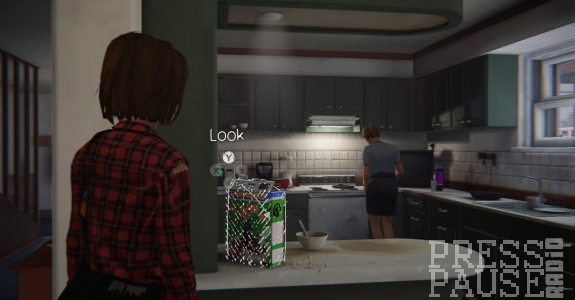
 t’s only Wednesday, and already, this week is turning out to be one of the of craziest happenings that you’ve ever lived. Following the aftermath of the life-changing event that the last episode ended with, Max Caulfield is stuck at the heart of the fallout caused from it, and is left with even more questions than answers about her control over the flow of time, but more importantly, she questions just who and what is more important to her as well.
t’s only Wednesday, and already, this week is turning out to be one of the of craziest happenings that you’ve ever lived. Following the aftermath of the life-changing event that the last episode ended with, Max Caulfield is stuck at the heart of the fallout caused from it, and is left with even more questions than answers about her control over the flow of time, but more importantly, she questions just who and what is more important to her as well.
Chaos Theory is the long awaited third entry of the running episodic game of Life is Strange, and while we’re still two more episodes away from the final conclusion of it all; it’s safe to say that this chapter could be the best episode of the series hands-down.

Much like the few particular penultimate episodes to the select crop of the iconic prime-time programing found on modern television, if Life is Strange were to end at the wrap-up of Chaos Theory, I wouldn’t feel the slightest bit of disappointment—that’s just how good this particular segment of the story and its delivery truly is.
The stage begins at the late hours of Tuesday night, following the interrogations of Blackwell’s principal and staff of your involvement with Kate Marsh’s actions, Max is left shaken over the fact that at center of incident, she was unable to completely use her power of time-travel to assist her through it all.
Although the ordeal seems to have been an isolated occurrence with your powers returning to you, the realization that you can lose them at any juncture in the game where they’re the most vital imparts this impetus on players to as attentive as they can to the details and developments of everything that’s happening. The results have this dual effect that’s effective for both the narrative, and mechanical applications of gameplay. Retaining everything you see and hear along the way helps ensure that you’ll every advantage you  need should such an occasion should again arise, all while connecting you to the fiction in a way that organically invests you to the world that’s being built.
need should such an occasion should again arise, all while connecting you to the fiction in a way that organically invests you to the world that’s being built.
And as if the introduction of new gameplay incentives rewarding players for their efforts towards a deeper investment of everything transpiring wasn’t enough, Chaos Theory takes advantage of the development and delivers some of the best character portrayals, developments, and interactions that you’ll see in video games today.
The rekindling relationship between Chloe and Max, and the new bond they sure over the application and predicament of Max’s powers reaches a fever point while working together to uncover the mysterious subterfuge of Nathan Prescott and the vortex club and whether or not they have anything to do with the disappearance of Chloe’s friend, Rachel Amber.
As the scenes unfold, Chloe’s despair steadily dissipates through the course of the night that her and Max spend together, and it’s all but gone in the following morning; it’s all the little touches of chemistry and personality between them that create the endearing sense of magic to their plight and the engaging attachment to their cause.
Chaos Theory doesn’t attempt to outdo the mechanical twist it’s predecessor did, but rather, it gears towards a narrative one instead, and while the trip there is memorable and immersive, the liberal adaption of an all too familiar plot device from an contemporary piece of fiction from the past is a bit heavy handed in its execution. While this does lead to an intriguing cliffhanger that creates a fairly plot development to capitalize on, the avenue it chooses to utilize for this transition is just lazy and half-hearted, ultimately diminishing the uniqueness that the series had established thus far.
It seems that the delay in the release of Chaos Theory has paid off; all of the graphical performance issues that plague the prior episodes are completely gone in this iteration. No screen tears, or misplaced texture popping and out, and poorly lip-synced animations that reek of that awkward uncanny valley portrayal; Episode 3 possess all of the graphical polish that should have been given to the game from the very beginning.

Keeping up with the trend that’s been set with Life is Strange to this point, the soundtrack is nothing less than magnificent. The caliber of the set-list is made from the talents of Breton, Bright Eyes, and Angus & Julia Stone; the effervescent collection of tunes at work is some of the finest efforts with composition used in games yet.
All the captivating nuance of youth and the human element of time travel that the Season of Life is Strange has delivered so far finally pays off in it’s third episode—Chaos Theory may already be the Magnum Opus of the season, and will surely be a hard-pressed to follow-up on.
